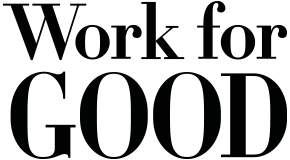[How We Hire] A nimble team for the changing world
As director of human resources for The Fund for Global Human Rights, Mikyala Clayton oversees the staffing efforts of a worldwide operation, with offices in Washington D.C., London, and spots across the globe, where the Fund works to advance human rights and improve life through targeted investments in and direct support of frontline activists. Clayton spoke with us from the Fund’s D.C. headquarters about the principles and processes that guide their hiring decisions, and keep employees ready to meet challenges wherever in the world they arise.
What I love about working here: What attracted me to the Fund was the mission, and what we do to help people around the world. What I’ve come to love is our culture: the kindness and compassion we show one another, as well as the people we serve. Like everyone here, I appreciate how collaborative our approach is, and how closely our teams work together.
My elevator pitch for potential hires: What I like to communicate is that working here is so much more than a job. What we’re doing makes a real impact in the world we live in, which is so important right now—maybe more than ever. That message really resonates with the kind of employees we want to attract.
Skill set vs. culture fit: For us, cultural fit is more important, especially considering our mission. It’s integral that our employees care about human rights, but we’re also looking for someone who is flexible and open to change. As a global organization, we have to be very nimble, because things are changing all the time. We use behavioral questions in our interviews to gauge candidates’ openness to change, and are very transparent about the challenges involved.
How we structure the interview process: As the director of human resources, I do the posting and initial screening for the position, then send qualified applications to the hiring manager. The manager conducts an initial conversation with the candidate, and after that we have in-person interviews using a series of behavioral-based and scenario-based questions that give candidates a realistic preview of the kind of work they’ll be doing—what the day-to-day experience would be like, depending on the position. We also have interviews a cross-section of staff from the departments they’ll be working with, and gather feedback from them.
What new hires first notice about the office: The physical space makes a big first impression: our offices are very open and bright, with lots of natural light and communal spaces where we can work together. We have a DC office, a London office, and our program officers are based remotely around the world. We try to find and create spaces that really work for our employees—considering spaces central to where we live, to make for easier commutes. We moved our D.C. headquarters to a new space in March of last year, which was very carefully planned by our facilities manager with lots of bright colors—one of our brand colors is orange—and a window in every office.
Our personnel goals for the future: We’ll be adding many new positions over the next year so my top priority is attracting a diverse pool of talent and keeping our compensation and benefits programs competitive in this changing market. We’re also working over the next year to build our employee brand. We’ve been focused on sourcing those great fits, but we’re looking to prioritize our brand identity to attract a broader base of candidates.
The Fund for Global Human Rights works to move human rights forward by providing resources and tools to the people and organizations on the ground who have real potential to generate positive change. Follow them on Facebook and Twitter.
Be inspired.
Would you like to receive more How I Work articles and other career insight in your inbox? Sign up for our email publications here.



